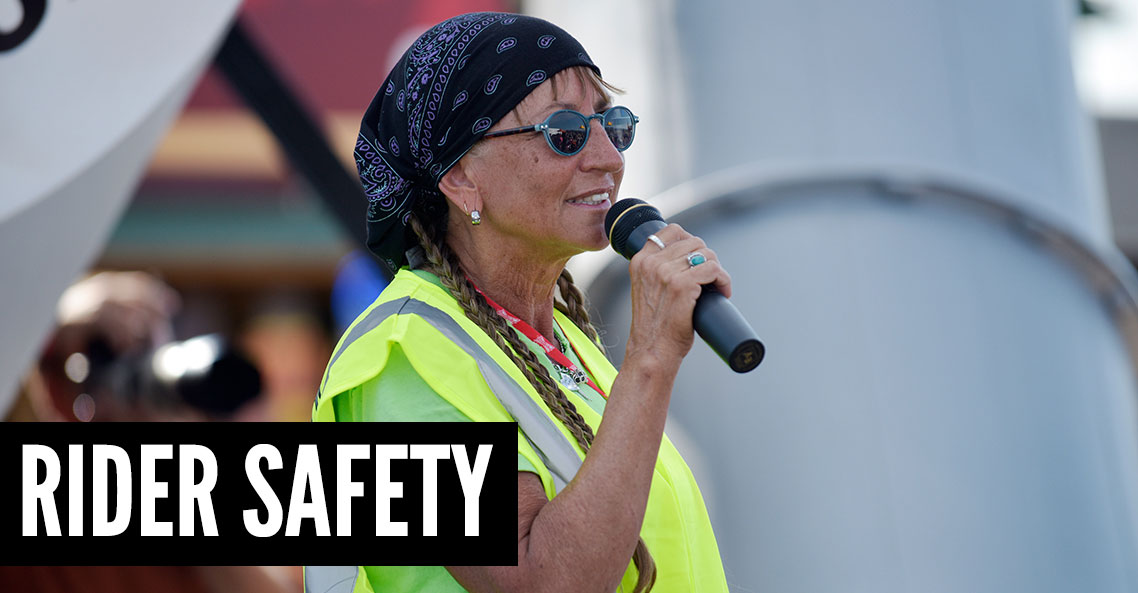I have been coordinating group rides for 16 years. As the Head Road Captain for a group of 25 female Road Guards called “Women In Motion,” I hope that this article can give you some good advice whether you are the person who is coordinating or participating.
Group Riding can be great fun when done safely. This topic has several different facets from planning a group ride, executing a group ride to participating in a group ride. I will take each are separately.
Planning a group ride:
Whether planning a short or long ride, there are a number of things that you, as the coordinator, should consider.
- Plan a ride that will address the skill level of your riders. While choosing a route with curves and hills is good, choosing a route with hairpin curves and significant uphill right hands turns can challenge even experienced riders.
- Try to plan your route so that it maximizes right turns and minimizes the number of intersections you need to go through.
- Plan to stop every hour or so in order to give riders a chance to eat, drink, stretch their legs and use restroom facilities.
- Be sure to plan a gas stop every 90-100 miles.
- Try to keep your groups small enough that they can get through intersections with a minimum of problems. This will require that you have enough experienced riders to help at both the front and the back of each group.
Executing the Group Ride:
Communication is the key
- Communicate with your riders by giving them maps of what your route will be, times you will be at each location, planned gas stops and your phone number.
- Ask your riders to arrive with a full tank of gas and an empty bladder.
- Instruct your group on group riding hand signals and staggered riding. For an excellent group riding instructional paper that can be handed out to riders and/or sent to them ahead of time. Check out this Motorcycle Safety Foundation video and this PDF of hand signals.
- Have someone assigned as the group leader. Your group leader should be the person who gives pre-ride instructions. You should also have one, preferably two people assigned at the rear of the group, often called the “Sweep”. The people at the rear of the group should be familiar with the route and should have tools for minor breakdown assistance, a cell phone to call for help if needed and Accident Scene Management (ASMI) training and supplies in the event a person needs medical assistance. The reason for two people at the back is so one can help while the other continues with the group or in the event it appears there is something more serious happening, one can help with the other person goes for help.
- If you have a “chase vehicle,” be sure it has water, medical supplies and tools in it. Instruct this person to maintain a safe distance from the back of the riders. This person may need to stop for more traffic signals than the rest of the group but will come upon anyone who has pulled over needing assistance.
- Inform riders that if they have a medical condition, they should let the sweep know. The sweep should be prepared to record the person’s name, emergency contact, bike model, license plate and medical condition. This can be done at registration as well saving time at the rendezvous sight.
- CB communication can be very helpful between the front and back of the pack. Test your communications before you get out on the road.
- New riders often want to ride in the back and maintain an excessive distance between themselves and the person in front of them. While this creates an issue with traffic wanting to cut through or into the pack, pushing the new rider to ride beyond their comfort zone is not typically a good idea either so be patient! Make sure the sweep is behind everyone and help this person have a good and a safe experience.
Participating in a group ride
Hands signals and staggered riding is a must. Check out Motorcycle Safety Foundation’s Guide to Group Riding.
Make sure everyone in the group is using the same information and hand signals and you will enjoy a wonderful experience.
For more information or advice, please feel free to contact Vicki Roberts-Sanfelipo at Vicki [at] roadguardians [dot] org





